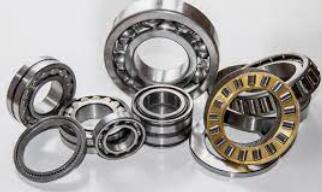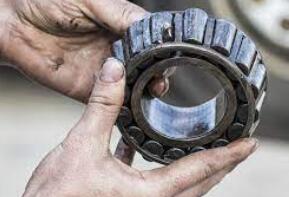The Influence of Vibration on Bearing Life
Discover the impact of vibration on bearing life. Learn about different types of vibration, causes, effects, and future innovations.
Essential for mechanical engineers.
Vibration is a significant concern in mechanical systems, particularly in the context of bearing performance and longevity.
Excessive vibration can lead to various detrimental effects on bearings, including surface distress, fatigue, and lubrication breakdown.
Influence/effects of vibration on bearings life:
1.Surface distress
2.Fatigue
3.Lubrication breakdown
This report aims to provide a comprehensive understanding of different types of vibration, their causes, and the resulting effects on bearing life.
Furthermore, it will explore potential future innovations in the field of mechanical engineering to mitigate the impact of vibration on bearings.
Types of Vibration

A. Radial Vibration:
Radial vibration refers to the oscillatory motion that occurs perpendicular to the axis of rotation.
It primarily affects radial bearings and can be categorized into three frequency ranges: low, mid, and high.
The amplitude of radial vibration typically ranges from a few micrometers to several millimeters.
For example, in rotating machinery, misalignment or unbalance can induce radial vibrations, causing the shaft to move off-center and exerting radial forces on the bearings.
B. Axial Vibration:
Axial vibration occurs along the axis of rotation and is parallel to the shaft.
It affects thrust bearings and can manifest in low, mid, or high frequency ranges.
The amplitude of axial vibration is typically small, often measured in micrometers.
For instance, misaligned couplings or improper installation can lead to axial vibrations, exerting axial forces on the thrust bearings.
Causes of Vibration

A. Unbalance:
Unbalance occurs when the mass distribution of a rotating component is uneven, causing the center of gravity to deviate from the axis of rotation.
This imbalance generates centrifugal forces, resulting in both radial and axial vibrations.
Examples of unbalanced-induced vibrations include a fan with a blade weight distribution imbalance or a rotating machinery component with non-uniform material deposition.
B. Misalignment:
Misalignment refers to the condition where the rotational axes of two connected components fail to coincide.
It can cause both radial and axial vibrations in the affected bearings.
For instance, a misaligned motor shaft connected to a pump impeller can induce vibrations that impact the bearings of both components.
C. Resonance:
Resonance occurs when the natural frequency of a system coincides with the excitation frequency, resulting in amplified vibrations.
It can lead to severe damage to bearings.
For example, a machine component subjected to cyclic loading at its resonant frequency can experience excessive vibrations, affecting the associated bearings.
Effects of Vibration on Bearings Life

A. Surface Distress:
Vibrations can cause surface distress on bearing elements, resulting in wear, pitting, and spalling.
The repetitive impact and sliding motions induced by vibration can lead to localized surface damage, reducing the bearing's load-carrying capacity and operational life.
B. Fatigue:
Vibrations introduce cyclic stresses on the bearing components, promoting the initiation and propagation of fatigue cracks.
Over time, these cracks can lead to catastrophic failure, compromising the bearing's structural integrity and longevity.
C. Lubrication Breakdown:
Vibrations can disrupt the lubricating film between the rolling elements and raceways, causing inadequate lubrication and increased friction.
This phenomenon leads to accelerated wear, heat generation, and premature bearing failure.
Future Outlook and Potential for Further Innovation:
The field of mechanical engineering holds promising potential for further innovation to mitigate the adverse effects of vibration on bearing life.
Here are some potential areas for future development:
Advanced Condition Monitoring:
Utilizing advanced sensor technologies, data analytics, and machine learning algorithms, engineers can develop more sophisticated condition monitoring systems.
These systems can detect and analyze vibration patterns in real-time, enabling proactive maintenance and minimizing the impact of vibration on bearings.
Improved Bearing Design:
Innovations in bearing design can enhance the ability to withstand vibrations.
This can include the development of specialized bearing materials, surface coatings, and optimized geometries that reduce the susceptibility to surface distress,
fatigue, and lubrication breakdown caused by vibrations.
Active Vibration Control:
Incorporating active vibration control mechanisms, such as adaptive damping systems or active magnetic bearings, can help counteract vibration-induced forces.
These systems actively monitor and adjust forces to reduce vibrations, protecting bearings and improving overall system performance.
Novel Damping Techniques:
Researching and implementing novel damping techniques, such as viscoelastic materials or tuned mass dampers, can help attenuate vibrations at their source.
These damping methods can be integrated into critical machine components to reduce vibration amplitudes and subsequently minimize the detrimental effects on bearings.
Conclusion:
Vibration can significantly impact bearing life, leading to surface distress, fatigue, and lubrication breakdown.
Understanding the types and causes of vibration enables engineers to develop effective strategies for mitigating its adverse effects.
Furthermore, ongoing innovations in condition monitoring,
bearing design, active vibration control, and damping techniques hold great promise for improving the resilience of bearings and enhancing the performance of mechanical systems in the future.





